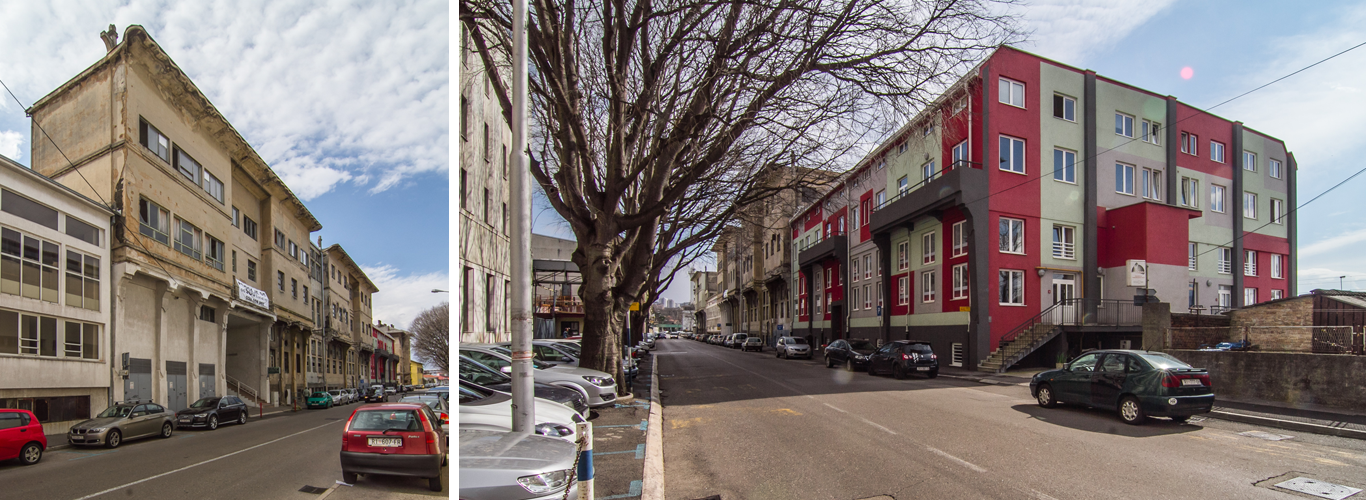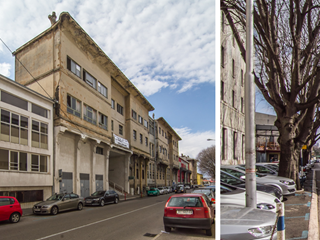Hotel Emigranti
address: Milutina Barača StreetPeriod: Secession/Art Noveau
Kind: Immovable material heritage
Century: 20
Year: 1905
Purpose: residential
At the beginning of the 20th century, with the development of the passenger port and the intensification of transatlantic routes to America, Rijeka became a centre of migratory movements of the population. Passenger capacities were insufficient, so the Hungarian Ministry of the Interior decided to build a new hotel. The project of the Hotel Emigranti was made by engineer Szilárd Zielinski, a professor at the Polytechnic Institute of the Budapest University. Zielinski decided on a completely unusual type of a reinforced concrete structure building. The structure and method of construction of the facility were certainly a complete novelty for Rijeka’s architecture. This facility proved that Rijeka was keeping up with the European trends of modern constructions. The construction work was carried out by the Budapest company Henrik Freud es Fiai in 1905. It is an approximately 160 meters long building with a ground floor and two storeys, located in the former Industrijska Street, opposite the Rice Mill. The same location was chosen because of the proximity to the port and railway pier. The basement housed waiting rooms, an outpatient clinic, bathrooms, disinfection rooms and ticket offices. On the first and second floor there were bedrooms and a gathering space for emigrants who had already undergone medical and sanitary control. A series of floral and geometric motifs and wavy lines indicates elements of Art Nouveau or, better said, a combination of Art Nouveau and upcoming Modernism.
The building of the former Hotel Emigranti exists even today. In the 1920s, it was used as a trade fair area and, after World War II, as an industrial facility. In 1953, the packaging factory of 8. Mart, later known as the Metallographic Combine, was placed in the area of the former hotel. The factory is still active under the name MGK-pack d.d. and, although it moved its production plant to Kukuljanovo, it still uses parts of the former Hotel Emigranti as office and warehouse spaces.
Valorization:
After the closing, hotel is a converted without major structural work. In the biggining of the 20th century the building has served as a fair and after World War II as an industrial site . Today there are offices.
Bibliography:
DARI, JU 51, kutija 152.
Lozzi-Barković, Julija, Secesija u arhitekturi Rijeke, Izdavački centar Rijeka, Rijeka, 2010.
Maurović, Željko, Hotel Emigranti, Sušačka revija, godina XV., br. 58/59, Klub Sušačana, Rijeka, 2007.
Rotim Malvić, Jasna, Hoteli, u: Arhitektura secesije u Rijeci, Moderna galerija Rijeka, Rijeka, 1997./1998., str. 254.
http://www.mgk-pack.com/index.html (17.12.2013.)
Novi list, Tvornica ambalaže „8. Mart“ – Rijeka, B. T., 28. i 29. studenoga 1964.




